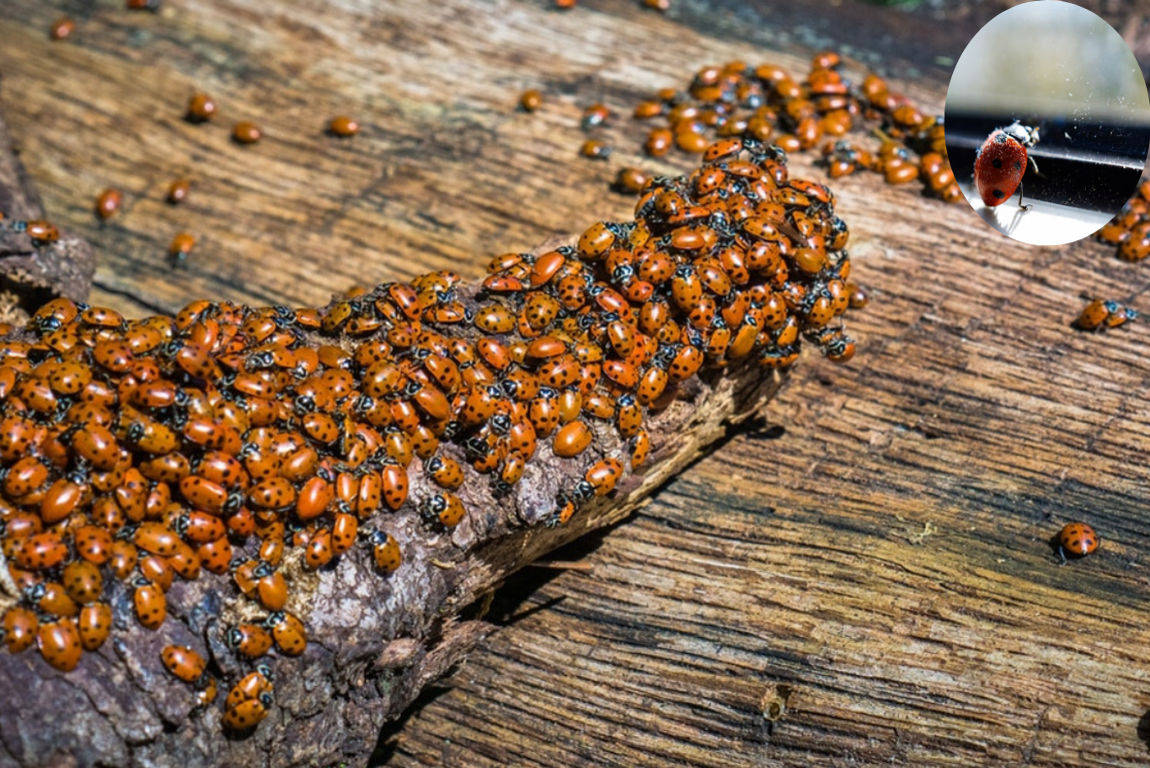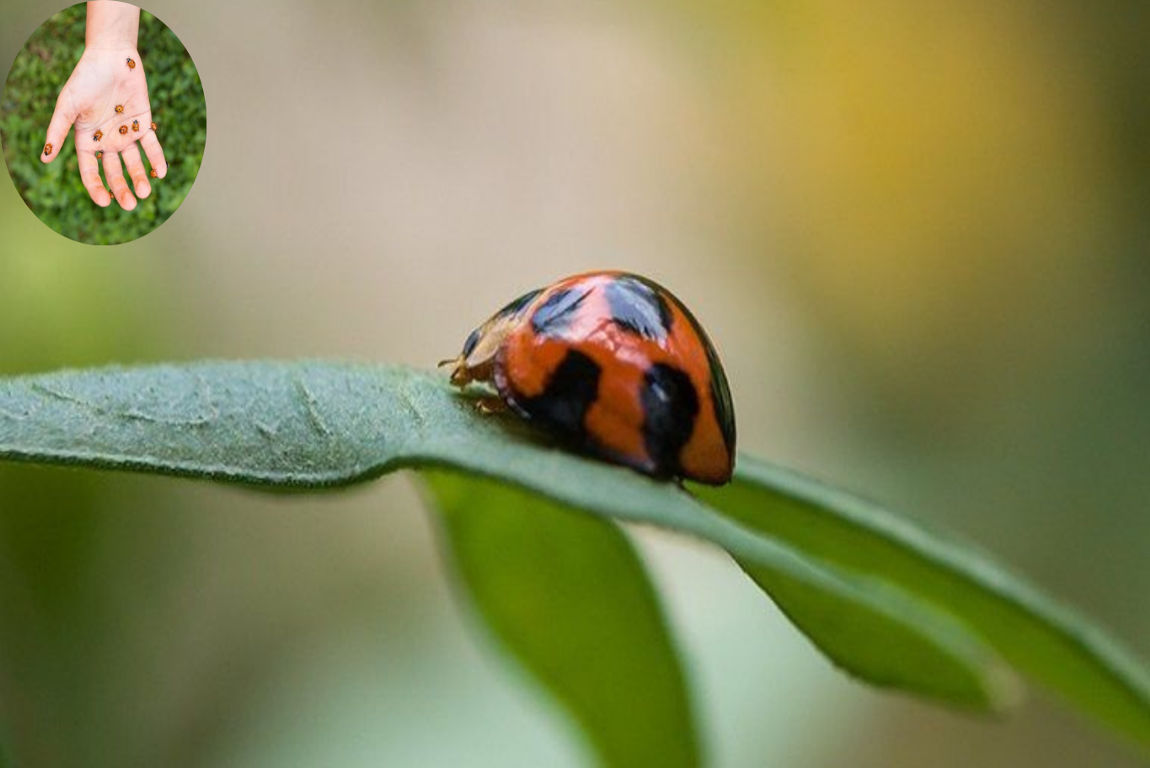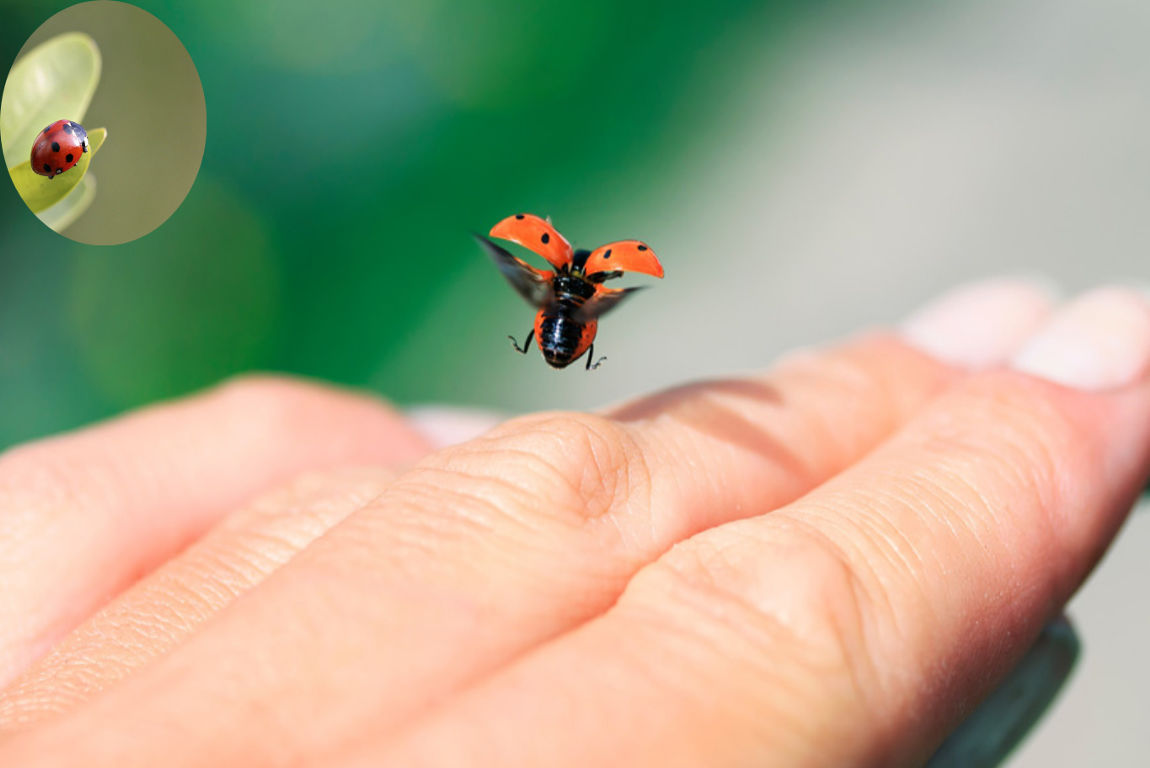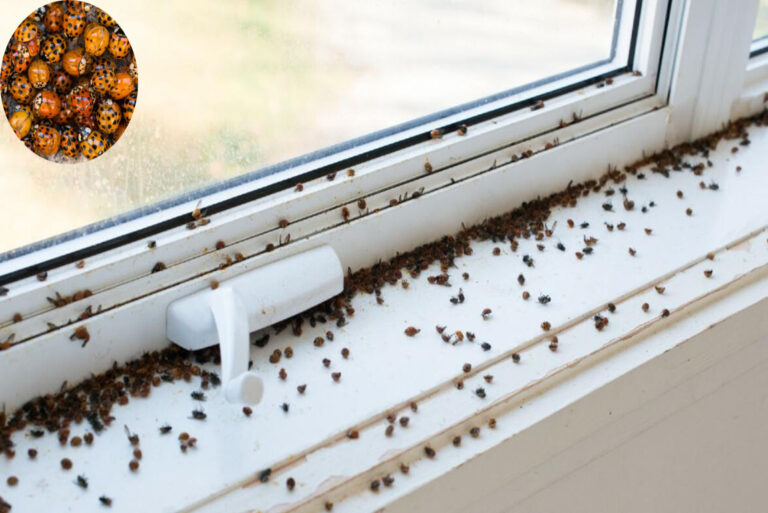Ladybugs are often admired for their bright colors and beneficial role in gardens. However, when these tiny creatures begin invading your home in large numbers, they quickly transform from delightful garden visitors to unwelcome houseguests. Why are there ladybugs in my house?
Understanding the reasons behind ladybug infestations is key to managing and preventing them effectively.
What Are Ladybugs?

Ladybugs, also known as ladybird beetles, are small insects belonging to the Coccinellidae family. While they are beloved for their vibrant appearance and pest-controlling abilities, they can become a nuisance when they invade homes in large numbers.
Ladybug Identification
Ladybugs are easy to recognize due to their distinctive physical characteristics:
- Color: Most ladybugs are red or orange with black spots, though some species may be yellow or entirely black.
- Size: They are tiny, with most adults measuring between 1/16 to 1/4 of an inch.
- Shape: Ladybugs have a dome-shaped body and short legs, which give them a rounded appearance.
The species most commonly found in homes is the Asian ladybeetles beetle, known for its orange color and slightly larger size compared to native ladybugs. These beetles are the ones most likely to cause infestations.
Ladybug Life Cycle
Ladybugs undergo complete metamorphosis, cycling through four stages:
- Egg: Ladybug eggs are tiny and yellow, often laid in clusters on the underside of leaves.
- Larva: The larvae look like tiny alligators with elongated bodies covered in spines. They are voracious predators during this stage.
- Pupa: The pupal stage is when the larva transforms into an adult ladybug.
- Adult: Fully developed ladybugs emerge, ready to reproduce and feed on pests.
Ladybugs are most active during spring and summer, but as the weather cools, they seek shelter to survive the winter.
Ladybugs: Friend or Foe?
In gardens, ladybugs are beneficial insects. They are natural predators of aphids, mealybugs, and other pests that damage plants. However, when they enter homes in large numbers, they can become a nuisance. Their defensive secretions can stain surfaces, and their swarming behavior can overwhelm homeowners.
Why Are There Ladybugs in My House?

If you’ve noticed ladybugs gathering in your home, you’re not alone. Certain environmental and structural factors make homes particularly appealing to these insects, especially during colder months.
Seasonal Behavior and Hibernation
Ladybugs are cold-blooded insects, meaning they rely on external warmth to regulate their body temperature. In the fall, they prepare for hibernation (known as diapause) to survive the winter months. During this time, they search for warm, sheltered places to hide, which often leads them to seek refuge indoors.
You may also read (uncovering the mystery of ants in your home).
Attractants: Why Your Home Appeals to Ladybugs
Your home might be beautiful to ladybugs for several reasons:
- Warmth and Light: Homes that receive a lot of sunlight or are painted in light colors mimic the warm rocks and tree bark ladybugs naturally gravitate toward.
- Gardens and Aphid Populations: If your house is surrounded by a garden with a high aphid population (a favorite food of ladybugs), it’s more likely to attract them.
- Sun-Exposed Homes: South- or west-facing homes that receive direct sunlight during the day are prime targets for ladybugs.
Entry Points: How Ladybugs Get Inside
Ladybugs are small and can squeeze through tiny gaps to gain access to your home. Common entry points include:
- Cracks in walls, foundations, or window frames
- Gaps around doors and vents
- Broken window screens or poorly sealed siding
Older homes are particularly vulnerable due to the presence of more cracks and crevices.
Pheromones and Swarming Behavior
Ladybugs are social insects and rely on pheromones to communicate. When one ladybug finds a suitable spot, it releases a chemical scent that attracts others. This explains why they often appear in large clusters or swarms. Once a few ladybugs enter your home, more are likely to follow.
Signs of a Ladybug Infestation
Recognizing the signs of a ladybug infestation early can help you take action before the problem escalates.
Visual Clues
The most obvious sign is the presence of live ladybugs:
- Clusters of ladybugs around windows, doors, or light fixtures
- Groups gathered in warm, unused spaces such as attics and corners
Physical Evidence
Ladybugs can leave behind physical traces, including:
- Yellowish stains on walls, furniture, or curtains are caused by their defensive fluid.
- There is a noticeable increase in sightings, particularly during colder months.
Behavioral Patterns
Ladybugs are most active during the day, often moving toward light sources, such as windows. They also tend to huddle in groups for warmth, especially in spaces that mimic their natural hibernation shelters.
Risks and Concerns of Ladybug Infestations

While ladybugs are not inherently dangerous, their presence can cause discomfort and inconvenience.
Are Ladybugs Dangerous?
The good news is that ladybugs are not harmful to humans or pets. They do not bite, sting, or spread diseases. However, their defensive secretions can cause mild skin irritation in rare cases.
Nuisance Factors
The main issue with ladybugs is the nuisance factor:
- Their secretions can produce a strong odor and leave stains on surfaces.
- Large swarms can cause psychological discomfort or frustration for homeowners.
You may also read (how to choose the perfect sofa bed for your home).
Impact on Home Comfort
A significant infestation can disrupt your sense of peace and comfort in your home. Without proper prevention, the problem may reoccur every year.
How to Prevent Ladybug Infestations

Prevention is the best way to avoid dealing with a full-blown ladybug infestation. Here’s how:
Sealing Entry Points
Inspect your home for potential entry points and seal them:
- Use caulk to close cracks in walls and foundations.
- Apply weatherstripping around doors and windows.
- Cover vents and chimneys with fine mesh screens.
Home Maintenance
Keep your home in good repair to make it less appealing to ladybugs:
- Fix broken window screens and seal gaps around utility pipes.
- Replace damaged siding and ensure door frames are tightly sealed.
Environmental Adjustments
Reduce outdoor factors that attract ladybugs:
- Control aphid populations in your garden with natural predators or insecticidal soaps.
- Minimize outdoor lighting or use yellow “bug lights” that are less appealing to insects.
Basement and Attic Protection
Ladybugs often hide in basements and attics during winter. To prevent this:
- Install vapor barriers or dehumidifiers to reduce moisture.
- Keep these spaces clean, dry, and well-sealed.
How to Get Rid of Ladybugs in Your House
If ladybugs have already invaded your home, there are several effective methods for removal.
Safe Removal Methods
For small infestations:
- Dish Soap Traps: Fill a bowl with soapy water and place it near the clusters. The soap breaks the surface tension, trapping the bugs.
- Vacuuming: Use a vacuum cleaner with a hose attachment to gently remove ladybugs. Dispose of them outdoors to avoid attracting more.
Natural and Chemical Solutions
For larger infestations:
- Diatomaceous Earth: Sprinkle this natural powder near entry points and infested areas. It dehydrates and kills ladybugs without harmful chemicals.
- Professional Pest Control: For persistent infestations, contact a pest control service for targeted treatments.
Cleaning and Aftercare
Once the infestation is cleared:
- Wipe surfaces with a mild detergent to remove stains and odors.
- Dispose of dead ladybugs promptly to prevent attracting other pests.
Long-Term Solutions and Professional Help
If ladybugs continue to be a recurring problem, consider long-term strategies.
Preventing Future Infestations
Set up a routine maintenance schedule to inspect and repair your home. Additionally, landscaping adjustments, such as planting ladybug-deterring plants, can also be beneficial.
When to Call a Professional
If the problem persists despite your efforts, it may indicate a deeper issue, such as structural damage or moisture problems. A professional can assess your home and provide tailored solutions to address your specific needs.
You may also read (how can you clean asbestos from house).

